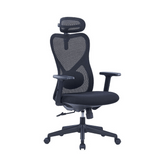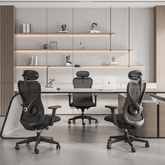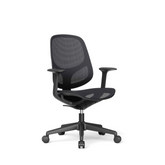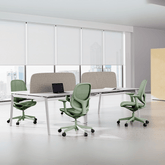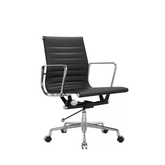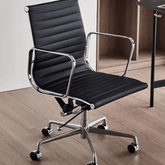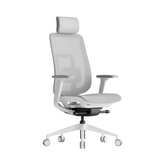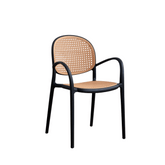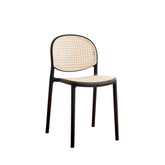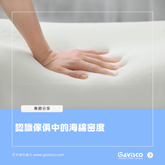In Hong Kong—one of the world’s most expensive office markets—maximizing limited space while enhancing employee productivity is a key challenge for businesses. Office desk layouts significantly impact work efficiency, team collaboration, and privacy. Two predominant layouts in Hong Kong are open-plan and cubicle workstations, each with distinct pros and cons.
Open-plan offices have gained popularity among Hong Kong’s tech firms, creative industries, and startups. This design eliminates or minimizes traditional partitions and walls, creating a barrier-free shared workspace. Alternatively, the conventional partitioned workstation (or cubicle office layout) remains dominant in traditional sectors like finance, law, and accounting. These semi-enclosed spaces typically feature 120–160cm-high partition panels. With both models offering advantages, which design should modern offices adopt?

1.1 Core Features of Open-Plan Offices:
- Barrier-free space: Low or no partitions enhance visual transparency and spatial perception.
- Flexible seating: Hot-desking (e.g., shared workstations) allows employees to choose different spots daily.
- Shared resources: Centralized printers and pantries reduce redundant equipment, cutting costs for Hong Kong businesses.
- Spontaneous interaction: Encourages cross-departmental informal communication.
- Unified aesthetics: Cohesive furniture and color schemes reinforce corporate culture.
1.2 Advantages of Open-Plan Offices
- Real-time collaboration: Boosts team communication efficiency.
- Space efficiency: Accommodates 15–20% more staff than cubicles—critical in high-rent Hong Kong.
- Lower upfront costs: Saves HK$3,000–5,000 per Pax by reducing partitions.
- Adaptability: Easy reconfiguration for team changes.
- Natural light optimization: Cuts energy use by 25%.
- Management visibility: Transparent oversight of team productivity.
1.3 Challenges of Open-Plan Offices
- Noise pollution: Disrupts concentration.
- Zero privacy: Unsuitable for sensitive tasks or calls.
- Limited personal space: Just 4–6 sqm per employee with minimal storage.
- Weak belongingness: Hot-desking at shared workstations reduces personal territory.
- Surveillance stress: "Big Brother" effect may cause discomfort.

2. Hybrid Offices: Hong Kong’s Future Trend
Acknowledging open-plan limitations, leading Hong Kong firms now adopt hybrid (or semi-open) designs blending both models’ strengths. Successful implementations reserve 10–15% enclosed spaces (e.g., meeting rooms, silence pod) to balance openness and privacy.
2.1 Key Hybrid Office Elements
- Zoning: 40–50% collaborative areas + 30–40% focus zones + 10–20% private spaces.
- Flexible partitions: Adjustable-height or movable panels.
- Hot-desking: Non-assigned seating boosts space efficiency.
- Tech integration: Room-booking systems for shared facilities.
- Diverse furniture: Standing desks, collaborative furniture, silence pods.

2.2 Best Practices for Hybrid Offices
Hong Kong’s successful hybrid offices often include:
- Strategic zoning: Workstations, collaborative area, and silence pods.
- Acoustic treatment: Sound-absorbing ceilings, carpets, and panels.
- Green integration: Plant walls for noise reduction and air purification.
- Wireless tech: Cloud tools minimize physical movement.

Conclusion: Designing the Ideal Hong Kong Office
Open-plan and cubicle layouts each offer unique value in Hong Kong’s dense commercial landscape. The optimal choice isn’t binary—it requires balancing corporate culture, workflows, and flexibility. Truly effective offices adapt to employee behaviors, not vice versa. In this dynamic market, spaces must remain agile to future-proof against evolving needs.
